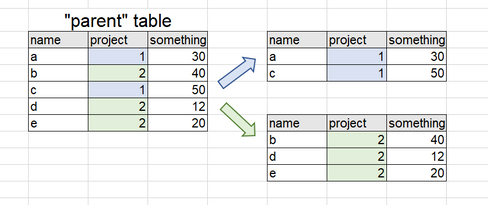- Power BI forums
- Updates
- News & Announcements
- Get Help with Power BI
- Desktop
- Service
- Report Server
- Power Query
- Mobile Apps
- Developer
- DAX Commands and Tips
- Custom Visuals Development Discussion
- Health and Life Sciences
- Power BI Spanish forums
- Translated Spanish Desktop
- Power Platform Integration - Better Together!
- Power Platform Integrations (Read-only)
- Power Platform and Dynamics 365 Integrations (Read-only)
- Training and Consulting
- Instructor Led Training
- Dashboard in a Day for Women, by Women
- Galleries
- Community Connections & How-To Videos
- COVID-19 Data Stories Gallery
- Themes Gallery
- Data Stories Gallery
- R Script Showcase
- Webinars and Video Gallery
- Quick Measures Gallery
- 2021 MSBizAppsSummit Gallery
- 2020 MSBizAppsSummit Gallery
- 2019 MSBizAppsSummit Gallery
- Events
- Ideas
- Custom Visuals Ideas
- Issues
- Issues
- Events
- Upcoming Events
- Community Blog
- Power BI Community Blog
- Custom Visuals Community Blog
- Community Support
- Community Accounts & Registration
- Using the Community
- Community Feedback
Register now to learn Fabric in free live sessions led by the best Microsoft experts. From Apr 16 to May 9, in English and Spanish.
- Power BI forums
- Forums
- Get Help with Power BI
- Desktop
- Re: Split Query for Tables
- Subscribe to RSS Feed
- Mark Topic as New
- Mark Topic as Read
- Float this Topic for Current User
- Bookmark
- Subscribe
- Printer Friendly Page
- Mark as New
- Bookmark
- Subscribe
- Mute
- Subscribe to RSS Feed
- Permalink
- Report Inappropriate Content
Split Query for Tables
Hey,
I wanted to ask if there is a query that allows a dynamic distribution of two tables?
Similar to the "append" query.
I am aware of the option of "duplicate a table" and then making a suitable "filter", but the idea is that the tables will automatically update from the "parent" table.
I add a small sample in the picture below.
Thanks,
Inbal
Solved! Go to Solution.
- Mark as New
- Bookmark
- Subscribe
- Mute
- Subscribe to RSS Feed
- Permalink
- Report Inappropriate Content
You can try this in DAX as well.
In Modelling -> New Table
Child_TableA= FILTER ( Parent_table, Parent_Table[Project] = 1)
Child_TableB= FILTER ( Parent_table, Parent_Table[Project] = 2)
In this way, you will have 2 dynamic child tables .
Hope this helps.
Thanks
Raj
- Mark as New
- Bookmark
- Subscribe
- Mute
- Subscribe to RSS Feed
- Permalink
- Report Inappropriate Content
You can try this in DAX as well.
In Modelling -> New Table
Child_TableA= FILTER ( Parent_table, Parent_Table[Project] = 1)
Child_TableB= FILTER ( Parent_table, Parent_Table[Project] = 2)
In this way, you will have 2 dynamic child tables .
Hope this helps.
Thanks
Raj
- Mark as New
- Bookmark
- Subscribe
- Mute
- Subscribe to RSS Feed
- Permalink
- Report Inappropriate Content
I am new to Power BI, although I have been working with Power Query in Excel for some time. I realize that rajendran's post was from several months ago, but I do appreciate the simplicity of his proposed solution. In response to similar questions posted elsewhere, I have typically read suggestions to duplicate the query and apply different criteria for each copy of the query. For small datasets, this might be workable. But for large datasets, duplicating that data pull repeatedly is very inefficient. rajendran's solution requires only a single data pull, which to me seems the most-efficient way to perform this kind of task. And I learned something new, which is also a plus! ![]()
- Mark as New
- Bookmark
- Subscribe
- Mute
- Subscribe to RSS Feed
- Permalink
- Report Inappropriate Content
@Anonymous Totally agree - @Anonymous's solution was much better than mine, and I learned something new too. This is why getting involved with the forum is a good thing - sometimes you find the way you do things is good; sometimes someone shows you how to do it better.
- Mark as New
- Bookmark
- Subscribe
- Mute
- Subscribe to RSS Feed
- Permalink
- Report Inappropriate Content
You seem to already have the answer you need.
You could either dupliacate parent and filter one for project 1 and the other for project 2 (essentially, exactly what you said you are already aware of!).
Otherwise, you could reference the parent table twice, and do the same filtering on both referencing queries.
I'm struggling to see why these are not suitable options - perhaps more information is needed?
Helpful resources

Microsoft Fabric Learn Together
Covering the world! 9:00-10:30 AM Sydney, 4:00-5:30 PM CET (Paris/Berlin), 7:00-8:30 PM Mexico City

Power BI Monthly Update - April 2024
Check out the April 2024 Power BI update to learn about new features.

| User | Count |
|---|---|
| 110 | |
| 99 | |
| 80 | |
| 64 | |
| 57 |
| User | Count |
|---|---|
| 145 | |
| 110 | |
| 91 | |
| 84 | |
| 66 |

